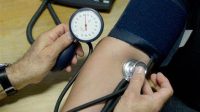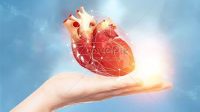Cancer is a broad term encompassing a group of diseases characterized by the uncontrolled growth and spread of abnormal cells. These cells have the ability to invade nearby tissues and travel through the bloodstream or lymphatic system to establish new tumors at distant sites (metastasis). While there are over 200 different types of cancer, three of the most common and concerning are breast cancer, lung cancer, and cervical cancer. This article explores these three cancers, their risk factors, symptoms, diagnosis, treatment options, and preventative measures.
1. Breast Cancer: A Global Concern
Breast cancer is the most prevalent cancer affecting women worldwide. It arises from cells within the breast tissue, and while it primarily affects women, men can also develop breast cancer, although it’s much less common.
-
Risk Factors: Several factors can increase a woman’s risk of developing breast cancer, including:
- Age: Risk increases with age, with most cases diagnosed in women over 50.
- Family history: Having a close relative (mother, sister, daughter) with breast cancer significantly increases risk.
- Genetic mutations: Inherited mutations in genes like BRCA1 and BRCA2 raise susceptibility.
- Hormonal factors: Early menstruation, late menopause, and hormone replacement therapy (HRT) for extended periods can influence risk.
- Dense breast tissue: Breasts with more glandular tissue and less fatty tissue make mammograms harder to interpret and may increase risk.
- Lifestyle factors: Obesity, lack of physical activity, and excessive alcohol consumption contribute to risk.
-
Symptoms: Early detection is crucial for successful treatment. Be aware of these potential signs:
- A lump in the breast or armpit
- Changes in breast size or shape
- Changes in the appearance of the nipple (dimpling, retraction)
- Nipple discharge (bloody discharge is especially concerning)
- Skin changes on the breast (redness, thickening, scaling)
-
Diagnosis: Early detection is typically achieved through mammograms, a low-dose x-ray imaging technique. For further evaluation, ultrasound or biopsy (tissue sample extraction) may be necessary.
-
Treatment: Treatment options depend on the stage and type of breast cancer. Common approaches include:
- Surgery: Removal of the cancerous tumor and surrounding tissue (lumpectomy or mastectomy)
- Radiation therapy: High-energy x-rays to destroy cancer cells
- Chemotherapy: Drugs that target and kill cancer cells throughout the body
- Hormone therapy: Medications to block the growth of hormone-receptor-positive breast cancer cells
-
Prevention: While not all cases are preventable, some proactive steps can reduce your risk:
- Maintain a healthy weight
- Engage in regular physical activity
- Limit alcohol consumption
- Breastfeed if possible
- Consider genetic counseling if you have a strong family history
- Schedule regular mammograms according to your doctor’s recommendations
2. Lung Cancer: The Leading Cause of Cancer Death
Lung cancer is the deadliest form of cancer, claiming more lives than any other type. It predominantly affects smokers, but exposure to secondhand smoke and certain environmental toxins are also risk factors.
-
Risk Factors: The primary culprit in lung cancer is tobacco use. However, other factors contribute as well:
- Smoking: The primary risk factor, with risk increasing the longer and more heavily you smoke.
- Secondhand smoke: Exposure to smoke from others significantly increases risk.
- Radon gas: A naturally occurring radioactive gas found in soil and rocks can enter homes and pose a risk.
- Air pollution: Long-term exposure to air pollutants can increase risk.
- Occupational exposure: Workers exposed to asbestos, chromium, and other chemicals have a higher risk.
-
Symptoms: Symptoms of lung cancer often don’t appear until the later stages. Here are some potential signs:
- Persistent cough that worsens over time
- Coughing up blood (even a small amount)
- Chest pain, often worsened by deep breathing, coughing, or laughing
- Shortness of breath
- Wheezing
- Hoarseness
- Unexplained weight loss
- Fatigue and tiredness
-
Diagnosis: Diagnosis involves chest x-rays, CT scans, and potentially bronchoscopy (a procedure to view the airways). Biopsies from suspicious areas may be needed to confirm cancer.
-
Treatment: Treatment options depend on the type and stage of lung cancer. Here are some common approaches:
– Surgery: Removal of part or all of the affected lung lobe (lobectomy) or entire lung (pneumonectomy) is considered when possible.
– Radiation therapy: High-energy x-rays to
– Chemotherapy: Drugs that target and kill cancer cells throughout the body.
– Targeted therapy: Newer medications that target specific mutations or pathways driving cancer growth.
– Immunotherapy: Treatments that help your immune system recognize and attack cancer cells.






